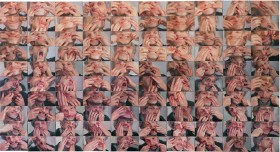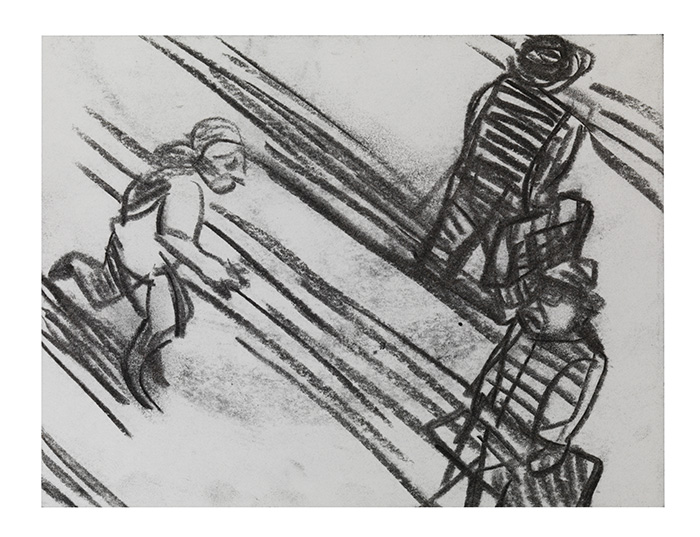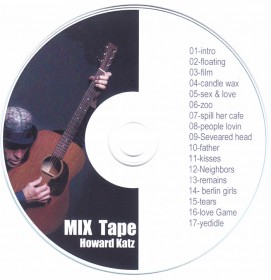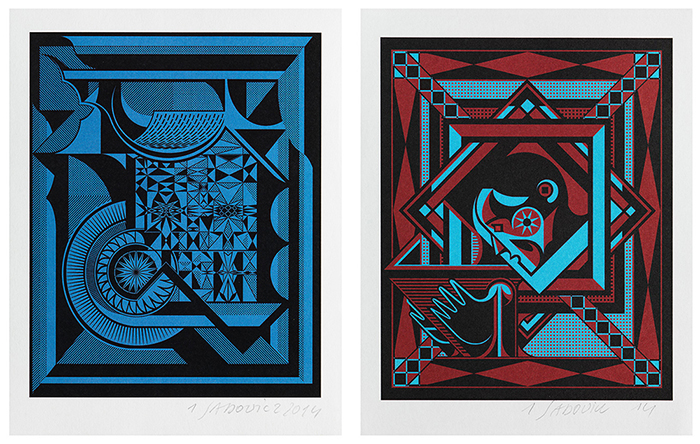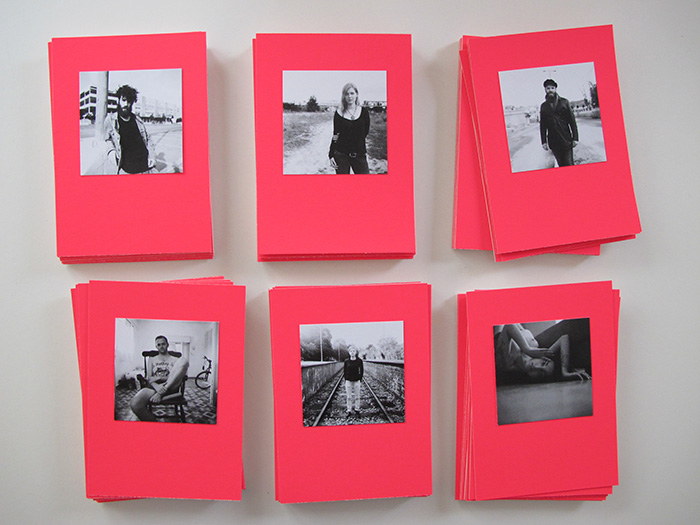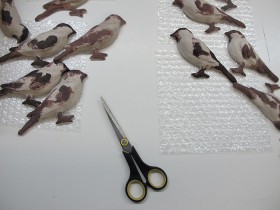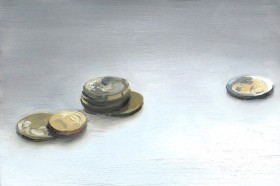The last few weeks have been full of hectic hustle and bustle, with boxes being passed from hand to hand, examined, unpacked, and sorted through. Such a variety of objects emerged from their cases and seemed to be disseminating in every direction through the museum.
Blue prints were spread out over a long, dark red sheet. Words seemed to glow in them – was it “tekhelet” or “argaman” or both? And what do they mean anyway?
A “magic” card appeared in a kitchenette. Suddenly everything was kosher: the sink, the refrigerator, the dishes, the whole kitchen. The artist promised it would be, and thus it happened.
The selfie smile can have a confusing effect with its hundredfold refractions. Smiling isn’t so simple: it can be exhausting or insincere – one sees it immediately. But what does this have to do with the sketches, done in strong black strokes on paper, of people, forms, animals, and fantasy characters?
Now one’s thoughts get steered in quite another direction, to ponder the loud “hand-made” music resounding through the corridors.
And one’s eyes are captivated by “rough-cut” short films flickering across all the screens to the right and left of the hallway – but then pulled away to a set of exactingly-designed prints.
Lots of hands reached enthusiastically towards these sumptuous blue and red motifs, holding them up against the bare white walls of our offices before mounting them carefully with photo corners on colorful boards – as befits a museum.
It was hard to believe, but there were still more – photographs flashing like lightning from their boxes, which were such a piercing pink color that it almost hurts to look at them.
At the end, a set of little reliefs of sparrows suddenly turned up. They all seemed to be sitting under a €4 sign.
What does it all mean? If anything, could it have been a dream – dreamed together by all the museum employees as they sat each in their own offices? The secret will be revealed today, 1 April, when these beautiful objects are gathered and placed in our art vending machine.
And, indeed, all of it – at least from the purely material perspective – will sit under a €4 sign, because you can buy one of these limited-edition works of art for that amount. Whoever happens to be on a tour of the permanent exhibition, and has a few coins in her pocket when she stumbles onto the art vending machine, can make one or more of these pieces her own.
This round of artworks were created for us by:
Deborah S. Phillips – “T’chelet fragments” (Blue fragments) and “T’chelet ve Argaman” (Blue and Crimson),
Anna Adam – “MAZEL TOV! Everything in your home is kosher today!” (the “magic” card),
Daniel Wiesenfeld – “SMILE” and “Charcoal drawings”,
Howard Katz – “MIX Tape” and “4 short films”,
Georg Sadowicz – “The Mill” and “The Prayer Leader” (offset prints),
Hadas Tapouchi – “Third Generation” (photographs on pink boxes),
Maria und Natalia Petschatnikov – “Sparrows” and “4 Euro”.
Gelia Eisert finds new artists to create work for the vending machine.
P.S.: “Tekhelet” means “blue”, by the way, and “argaman” means “crimson”. You can learn more about the works of art in the info-texts that come with them – and, soon, here on the blog as well.


